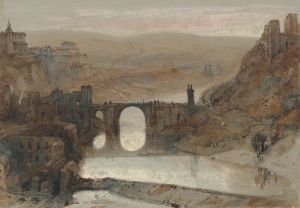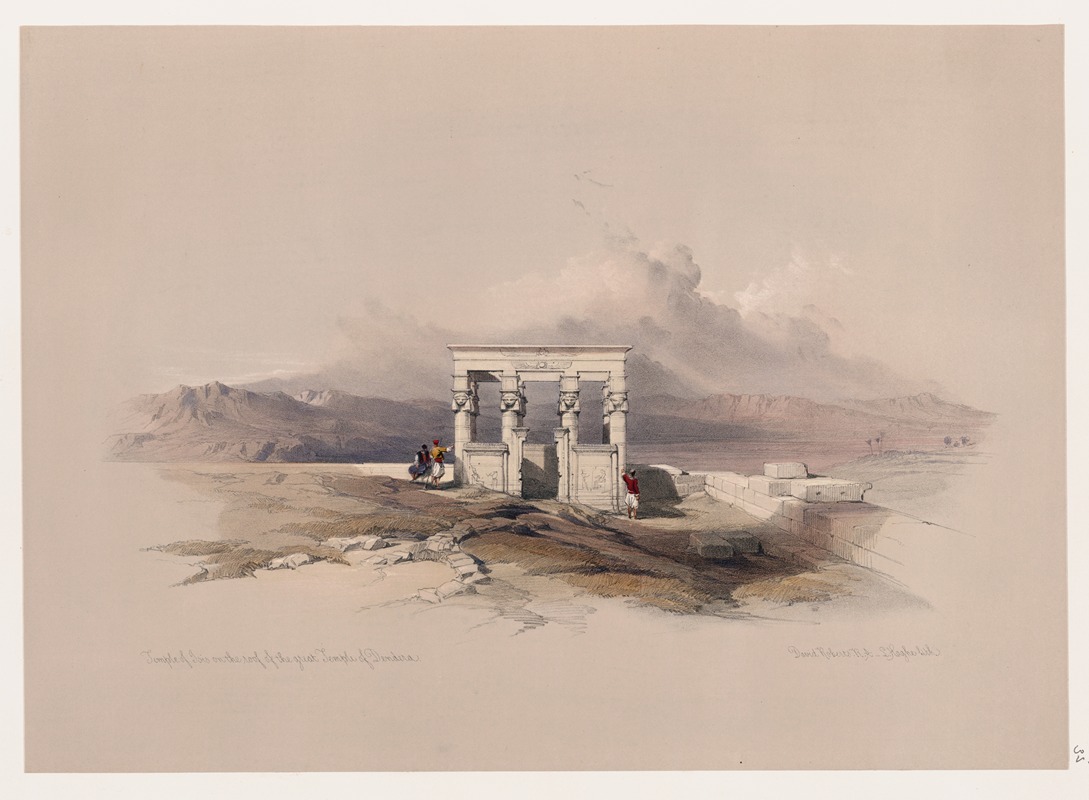
Temple of Isis on the roof of the great temple of Dendera [Dandara].
A hand-painted replica of David Roberts’s masterpiece Temple of Isis on the roof of the great temple of Dendera [Dandara]., meticulously crafted by professional artists to capture the true essence of the original. Each piece is created with museum-quality canvas and rare mineral pigments, carefully painted by experienced artists with delicate brushstrokes and rich, layered colors to perfectly recreate the texture of the original artwork. Unlike machine-printed reproductions, this hand-painted version brings the painting to life, infused with the artist’s emotions and skill in every stroke. Whether for personal collection or home decoration, it instantly elevates the artistic atmosphere of any space.
David Roberts was a renowned Scottish painter known for his detailed and accurate depictions of architectural and historical sites, particularly in the Middle East and North Africa. One of his notable works is "Temple of Isis on the Roof of the Great Temple of Dendera," which captures the grandeur and intricate details of the ancient Egyptian temple complex at Dendera.
The Temple of Dendera, located near the modern town of Qena in Egypt, is one of the best-preserved temple complexes from ancient Egypt. It is primarily dedicated to Hathor, the goddess of love, beauty, and music, but also features a smaller temple dedicated to Isis on its roof. The complex dates back to the Ptolemaic period, with construction beginning around 54 BCE and continuing into the Roman period. The temple is renowned for its rich decorations, including hieroglyphs, reliefs, and astronomical ceilings.
Roberts visited Egypt in the late 1830s as part of a larger expedition to document the ancient sites of the region. His journey was part of a broader 19th-century European fascination with the Orient, spurred by Napoleon's earlier campaign in Egypt and the subsequent scholarly interest it generated. Roberts' work was significant because it provided one of the first comprehensive visual records of these sites, which were largely unknown to the Western world at the time.
In "Temple of Isis on the Roof of the Great Temple of Dendera," Roberts captures the architectural beauty and historical significance of the temple. The painting showcases the temple's columns, adorned with intricate carvings and hieroglyphs, and the surrounding landscape, which highlights the temple's prominence in the area. Roberts' attention to detail and use of light and shadow bring the scene to life, offering viewers a glimpse into the grandeur of ancient Egyptian architecture.
Roberts' paintings were later turned into lithographs and published in a series titled "The Holy Land, Syria, Idumea, Arabia, Egypt, and Nubia," which gained widespread acclaim and contributed to his reputation as one of the leading Orientalist artists of his time. These works played a crucial role in shaping Western perceptions of the Middle East and North Africa during the 19th century.
The Temple of Dendera remains a significant archaeological site today, attracting scholars and tourists alike who are interested in ancient Egyptian history and architecture. Roberts' depiction of the Temple of Isis on the roof of the Great Temple of Dendera continues to be appreciated for its historical accuracy and artistic merit, serving as a valuable visual record of one of Egypt's most important temple complexes.





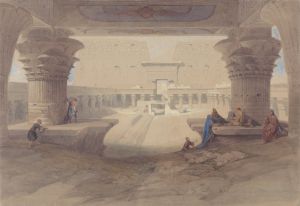
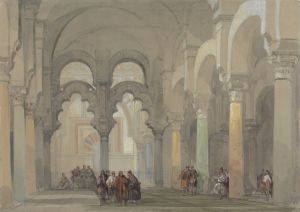
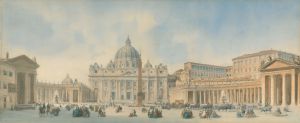

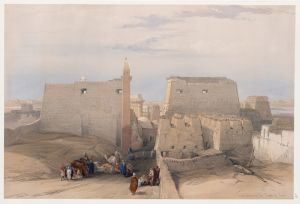
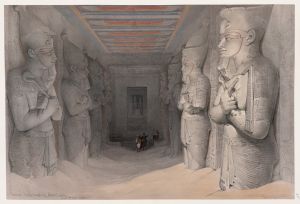
![Karnac [Karnak]. Nov. 29th, 1838.](/imgs/217502/s/david-roberts-karnac-karnak-nov-29th-1838-8df2346d.jpg)
![Lateral view of the temple called the Typhonæum, at Dendera [Dandara].](/imgs/217507/s/david-roberts-lateral-view-of-the-temple-called-the-typhonaeum-at-dendera-dandara-b378b9d7.jpg)
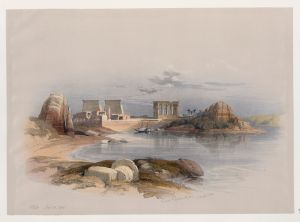
![Portico of the Temple of Edfou [Idfû], Upper Egypt. Nov. 23rd, 1838.](/imgs/217527/s/david-roberts-portico-of-the-temple-of-edfou-idfu-upper-egypt-nov-23rd-1838-79b6cf5b.jpg)

